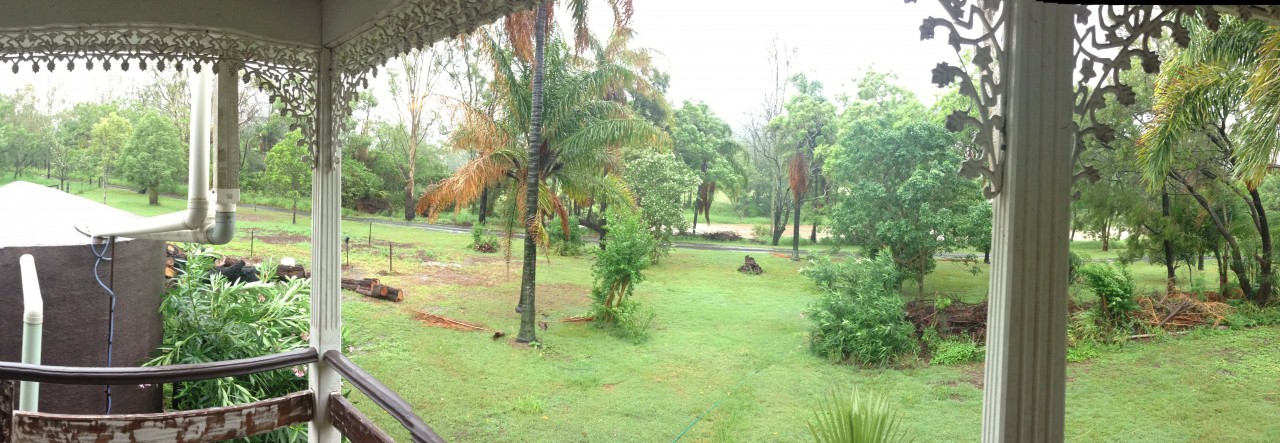Working with Bernie Walker-Gibbs, CD&DU has helped produce CQU’s first “web2.0 course site” for the course EDED11448, Creative Futuring. It’s been talked about previously. This post talks briefly about the purpose and initial experience.
Overview
At a recent on-campus presentation I gave an overview of the how and why behind this little experiment. If you really want, you can have a listen via Google Video
What
The work the students will be doing during term can be explained by drawing on the structure of the site:
- Discussion
A place for students and staff to talk about the course. Implemented using a blogger blog. - Learning Space
All of the material for the course hosted on a WetPaint wiki. - Portfolio
One part of their assessment is to develop an idea that will fundamentally revolutionise the way people currently work and live. They are meant to use their RedBubble portfolio explore possibilities and develop ideas. Some of the students already use RedBubble to host a portfolio of their artistic work – you can see some examples on the Portfolio page. - Weblog
The students will be expected to use their Redbubble journal to reflect on material from within the course as part of one of their assignments. - Resources
As students and staff are traveling across the web they will be using del.icio.us to tag/bookmark resources they find relevant to the course and its content. This approach will also be used to generate a podcast of resources they find on the web.
While the website will provide one interface into this work the theory is that they will also be able to use a news reader via a course OPML feed.
Initial experiences
- Initial implementation has been surprisingly easy.
The combination of RSS feeds from the external services, Yahoo Pipes, Feedburner, BAM and Javascript has worked surprisingly simply. This appears to be a very useful way of developing a high level of e-learning with a minimum of cost.
- Little annoyances
Not many, mostly to do with the need to become familiar with a different way of developing websites. The one that springs to mind is that the RedBubble feeds add a “Comment on this work” link that is not within a paragraph tag which throws out the CSS.
- Separate services make it difficult to get started
Using 5 separate ‘web 2.0 services’ means that students have to create accounts (if they don’t already have them) and come to terms with each of the services before starting the course. This is a hurdle. For a normal course site students may well have a similarly complex hurdle, but it is one which, once overcome, is applicable to most of the other course sites. At least at the moment the “web 2.0” approach can’t be shared. This isn’t such a problem for this specific course, a course where innovation etc is a focus. But it won’t transfer easily. The implication is that we will need to reduce this hurdle somewhat to be more widely adopted.
- Initial student perceptions.
The students could be considered in the net-gen generation and most had MySpace accounts. Only one (of 8 or 9) had a blog. Most were somewhat overwhelmed by the number of tasks required to get started.
The combination of RSS feeds from the external services, Yahoo Pipes, Feedburner, BAM and Javascript has worked surprisingly simply. This appears to be a very useful way of developing a high level of e-learning with a minimum of cost.
Not many, mostly to do with the need to become familiar with a different way of developing websites. The one that springs to mind is that the RedBubble feeds add a “Comment on this work” link that is not within a paragraph tag which throws out the CSS.
Using 5 separate ‘web 2.0 services’ means that students have to create accounts (if they don’t already have them) and come to terms with each of the services before starting the course. This is a hurdle. For a normal course site students may well have a similarly complex hurdle, but it is one which, once overcome, is applicable to most of the other course sites. At least at the moment the “web 2.0” approach can’t be shared. This isn’t such a problem for this specific course, a course where innovation etc is a focus. But it won’t transfer easily. The implication is that we will need to reduce this hurdle somewhat to be more widely adopted.
The students could be considered in the net-gen generation and most had MySpace accounts. Only one (of 8 or 9) had a blog. Most were somewhat overwhelmed by the number of tasks required to get started.

Xavier (RB Dev)
“âComment on this workâ? link that is not within a paragraph tag which throws out the CSS.”
Aiyee, you’re right! I’ll fix that for the next release…
d.jones
Xavier, that would be much appreciated. You’ve also just provided a great example of the beauty of a “web 2.0” world.